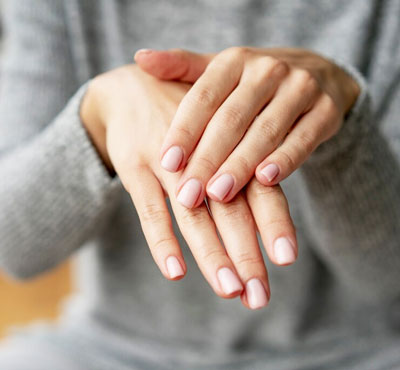What Are Nail Disorders?
Nail pathology includes all disorders of the appearance, strength, or function of the nails. These problems can be caused by Mycotic infection, trauma, dermatological eruption, or systemic disease. Nail diseases can involve one or more nails and can be acute or chronic based on the reason.
Common Nail Disorders
- Fungal Infections (Onychomycosis) - A common disease characterized by a fungal infection of the nail leading to discolouration, thickening and brittleness.
- Ingrown Toenails - Take place when the tips of the nails penetrate the underlying skin and result in pain, erythema and oedema.
- Psoriasis-Related Nail Changes - Nail psoriasis results in pitting, thickening, and staining of nails which, furthermore, are often painful or tender.
- Paronychia - Infection of skin over the nails causing erythema, swelling and pustular forms of blister.
- Trauma-Related Disorders - Injuries to the nail bed may produce discolouration, loss of attachment, or dysmorphic nail growth.
- Brittle Nails - Break and splitting nails typically arise from immersion in water, chemical, or nutritional deficiencies.
- Leukonychia - White spots on the nail, due to micro trauma or zinc deficiency.
Causes of Nail Disorders
Nail disorders can stem from various factors, including:-
- Infections - Fungal, bacterial or viral infection is one of the main reasons for nail diseases.
- Injuries - Traumatic injury to a nail or nail bed may lead to abnormal growth trajectories or discolouration.
- Systemic Conditions - Diseases such as diabetes, thyroid disorders, and anaemia can impact nail conditions.
- Skin Conditions - Psoriasis, eczema, and lichen planus often involve the nails.
- Nutritional Deficiencies - Weakness of nails due to insufficient amounts of necessary nutrients, such as biotin, zinc and iron, can occur.
- Lifestyle Factors - Exposure to water, too many chemicals or wearing of acrylic nails may damage nails.
Nail disorder symptom presentations differ greatly in the nature of symptoms but may be characterized by:-
- Discolouration (yellow, white, brown, or green nails).
- Thickening or thinning of nails.
- Crumbling or brittle texture.
- Pitting or ridges on the nail surface.
- Pain, tenderness, or swelling around the nail.
- Detachment of the nail from the nail bed.
At Dermavision - The Skin Clinic, our dermatologists perform a detailed clinical examination to accurately diagnose nail diseases. Diagnosis may involve:-
- Physical Examination - Observing the nails' appearance, texture, and colour.
- Nail Clipping or Scraping - Sits of samples are taken to.
- Skin & Blood Tests - These can be suggested in cases of suspected systemic disease.
- Dermatoscopy - An instrument by which to inspect the nail and perineal skin structures closely.
Management of nail disorders necessitates individualized treatment, according to the type and degree of the condition.
Fungal Nail Infections
- Topical Treatments - Antifungal creams, ointments, or medicated nail lacquers are also therapeutic options in the lighter form.
- Oral Medications - Oral antifungals (terbinafine or itraconazole) are used in severe infections.
- Laser Therapy - Sophisticated laser treatments are applied to eradicate fungal infections without affecting the nail.
Ingrown Toenails
- Conservative Management - Home care such as soaking the affected foot, appropriate shoe wear and proper foot nail trimming may help relieve symptoms.
- Surgical Intervention - Partial or total nail loss can be indicated in recurrent cases and may require nail removal.
Nail Psoriasis
- Medications - Topical steroids, vitamin D analogues or systemic agents control inflammation and nail disease.
- Light Therapy - UV light treatments can reduce psoriasis-related symptoms.
Paronychia
- Antibiotics or Antifungal Creams - Depending on the cause, these medications treat infections effectively.
- DrainageProcedures - In severe cases, draining the pus-filled area is necessary.
Brittle Nails
- Hydration - Using moisturizers or nail oils nourishes them in a brittle nature.
- Supplements - Biotin and other micronutrients promote nail health with time.il Disorders
Maintaining healthy nails requires consistent care and attention. Here are some preventive measures:-
- Maintain Hygiene - Keep nails clean and dry to prevent infections.
- Trim Properly - Cut nails straight across to avoid ingrown toenails.
- Avoid Harsh Chemicals - Use gloves when handling detergents or chemicals.
- Moisturize Regularly - Hydrate nails and cuticles with nourishing oils or creams.
- Limit Artificial Nail Use - Prolonged use of acrylic nails can weaken natural nails.


